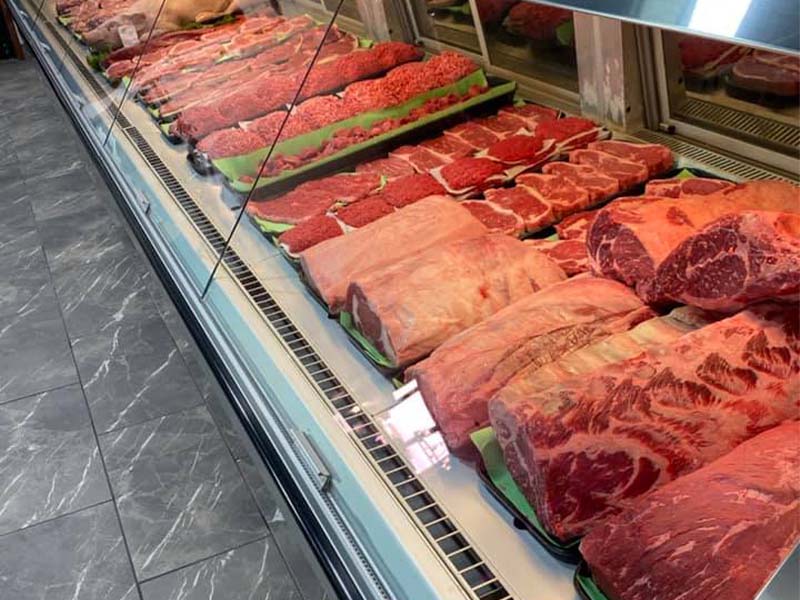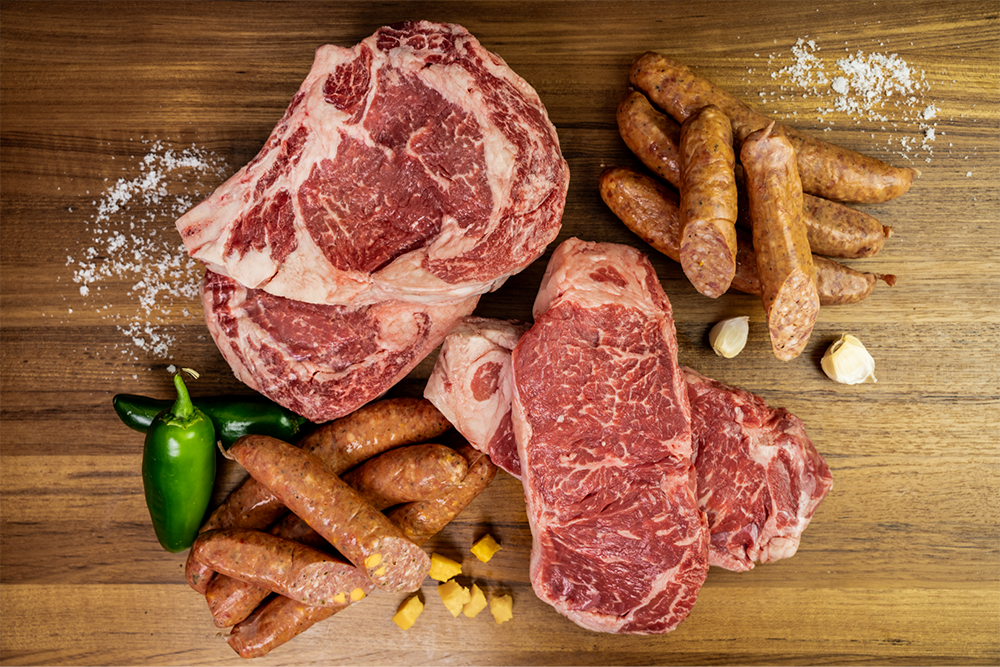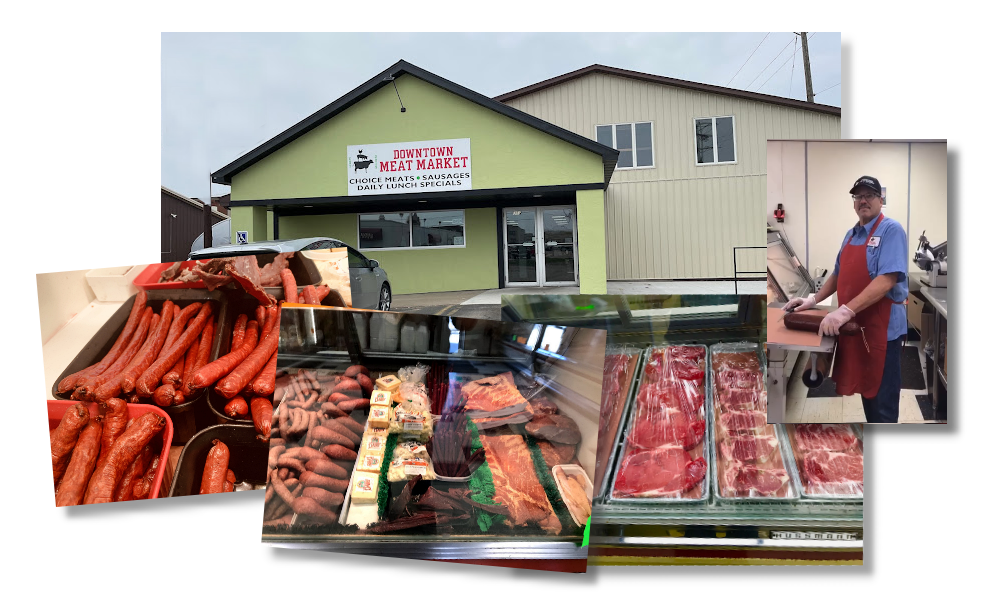Uncover the Art of the Butcher's Cut in a Modern Meat Market
In the ever-evolving landscape of modern-day meat markets, the butcher's cut has transcended its standard roots, merging old-time workmanship with contemporary methods. bagley farms meat market edwardsville il. Today's butchers are not just cpus of meat; they are well-informed artisans who highlight sustainability and ethical sourcing. Their experience in picking and preparing cuts customized to certain cooking requirements supplies an unparalleled dining experience. What absolutely establishes the modern butcher apart is their ability to build a much deeper link in between customers and the origins of their meat. How do these masters balance tradition with advancement, and what ramifications does this have for the future of meat consumption?
Evolution of Butchery Techniques

The mid-20th century saw butchery strategies better improved by scientific insights right into muscular tissue biology and meat aging, improving both tenderness and taste. Technologies like vacuum cleaner packaging and refrigeration extended item shelf-life, enabling butchers to diversify offerings and improve top quality control. This duration also noted the increase of specific tools, such as band saws and meat slicers, which raised precision and efficiency in meat handling.
The 21st century has actually introduced electronic innovation into the butchery world. Electronic systems now assist in tracking animal provenance and maximizing cuts to satisfy particular customer choices. Furthermore, a revival in artisanal butchery has actually emerged, mixing conventional skills with modern-day knowledge to accommodate consumers looking for honest and lasting meat alternatives. This development emphasizes a vibrant interplay in between tradition and technology, meeting modern demands while maintaining the craft's heritage.

Comprehending Meat Cuts

Comprehending the complexities of meat cuts is vital for both butchers and consumers seeking top quality and worth. Each cut originates from a different part of the pet, giving special flavors, textures, and food preparation techniques. Mastery of these distinctions not just improves culinary experiences yet likewise optimizes the utility of each carcass. For butchers, precise cuts mirror skill and respect for the craft, making certain very little waste and optimal return.
The main categories of meat cuts consist of primal, sub-primal, and retail cuts. Primitive cuts, such as the loin, rib, and chuck, are the large sections originally separated from the carcass. Butchers after that break these down better into sub-primal cuts, prior to lastly generating retail cuts offered to consumers, like ribeye or tenderloin. Each phase requires cautious focus to anatomical framework and muscle make-up.
Understanding muscle mass make-up is essential; muscular tissues used much more regularly by the pet have a tendency to be harder and are best matched for slow cooking techniques, while less-used muscular tissues, like those found in the loin, are much more tender and suitable for cooking or roasting. Familiarity with these distinctions equips customers to make enlightened choices, enhancing hop over to here their culinary ventures.
Picking Top Quality Meat
Selecting the best meat includes more than just choosing an aesthetically enticing piece from the screen. The art of choosing high quality meat calls for a discerning eye and knowledge of particular attributes that symbolize quality and quality.
Second of all, think about the marbling, which describes the white streaks of fat within the muscle mass. Appropriate marbling is an essential indication of tenderness and taste, as it melts throughout cooking, enhancing the meat's juiciness. Keep in mind, higher marbling usually correlates with exceptional high quality cuts, such as USDA Prime.
Appearance is one more critical aspect; meat should really feel strong to the touch, not slimy or extremely soft. Additionally, bear in mind the scent. Fresh meat must have a clean, neutral odor, without any type of sour or repulsive odors.
Matching Cuts With Food Preparation Methods
Effectively coupling cuts of meat with the suitable food preparation approaches is important for attaining optimal flavor and structure. Various website link cuts vary in tenderness, marbling, and connective cells web content, each requiring particular methods to open their potential. For example, tender cuts like filet mignon and ribeye, with their intrinsic marbling, take advantage of high-heat, quick-cooking methods such as grilling or pan-searing. These methods improve the meat's all-natural tastes and make certain a juicy finish.
Alternatively, harder cuts like brisket and chuck roast are abundant in collagen, which damages down into gelatin when cooked slowly. These cuts are optimal for braising or sluggish roasting, enabling the meat to tenderize in time and establish deep, complex flavors. Similarly, cuts such as brief ribs and pork shoulder make out well with slow-cooking approaches, where expanded cooking times change their robust textures into delicious recipes.
Lamb shanks and oxtail, which need extended cooking to soften, are best candidates for stewing or slow-moving simmering. These approaches coax out rich, hearty tastes while preserving moisture. By understanding the one-of-a-kind attributes of each cut, chefs and home cooks alike can boost their culinary developments, making sure each recipe is both pleasing and memorable.
The Butcher's Duty Today
Browsing the progressing landscape of the modern meat market, the news butcher's duty today prolongs past simple preparation of cuts. Contemporary butchers are cooking artisans, instructors, and advocates for lasting methods. They link the space in between the farm and the fork by ensuring honest sourcing, understanding pet husbandry, and prioritizing openness in the supply chain. This shift shows the expanding consumer need for quality over amount, where provenance and animal well-being are paramount.
In enhancement to crafting accurate cuts, butchers currently involve directly with clients, supplying cooking guidance and customizing options to suit private demands and preferences. Their expertise in meat aging, marbling, and flavor accounts encourages consumers to make educated choices, boosting their culinary experiences. This customized solution exhibits the butcher's advancing role as a trusted consultant in the kitchen.
Additionally, butchers are crucial in minimizing waste, utilizing whole animals to produce varied items such as sausages and supplies - bagley farms meat market edwardsville il. This thorough approach not only respects the animal however likewise lines up with modern sustainability objectives. In this means, the modern-day butcher embodies both tradition and innovation, adapting to an ever-changing market while preserving the artistry and integrity of their craft

Conclusion
The modern butcher's craft elaborately weaves traditional strategies with contemporary developments, stressing sustainable practices and moral sourcing. Mastery in recognizing diverse meat cuts and quality signs empowers butchers to give informed referrals, lining up details cuts with ideal food preparation techniques. This proficiency not just elevates cooking experiences but likewise reinforces the connection in between consumers and the beginnings of their food. By honoring historical techniques while embracing modern needs, the butcher's function continues to be important in today's innovative meat market.
Comments on “Bagley Farms Meat Market Edwardsville IL: Your Best Location for Regional Meat Choice”